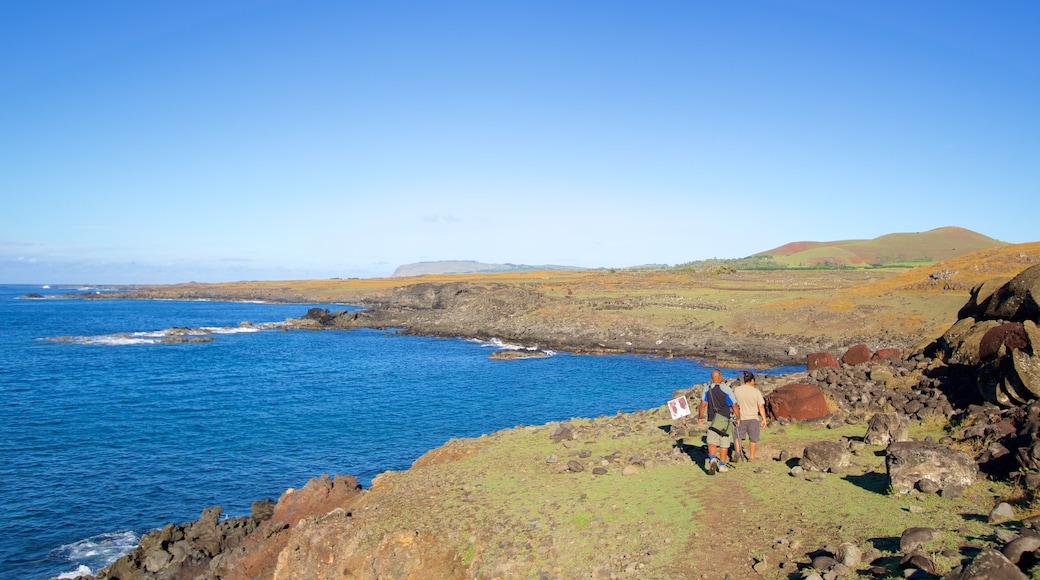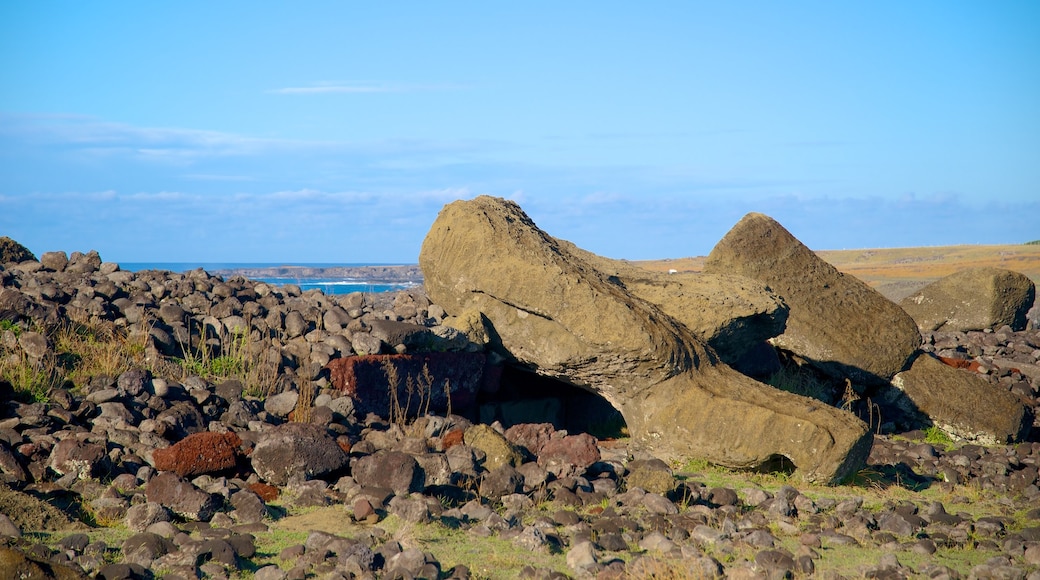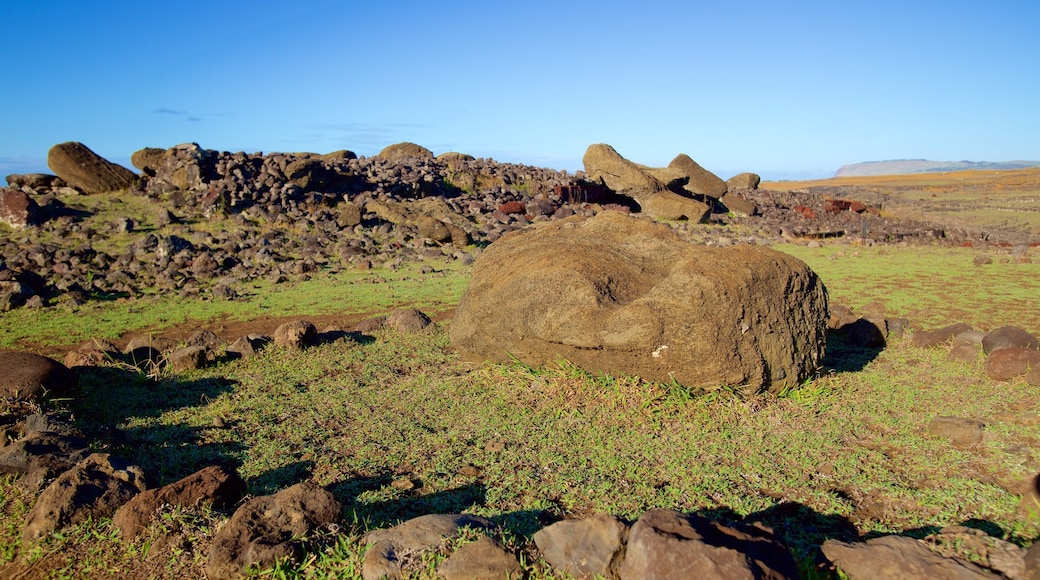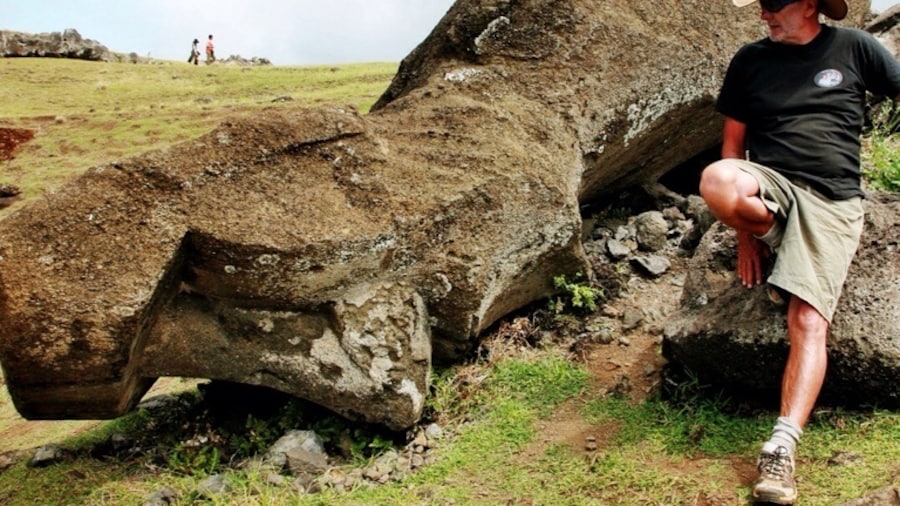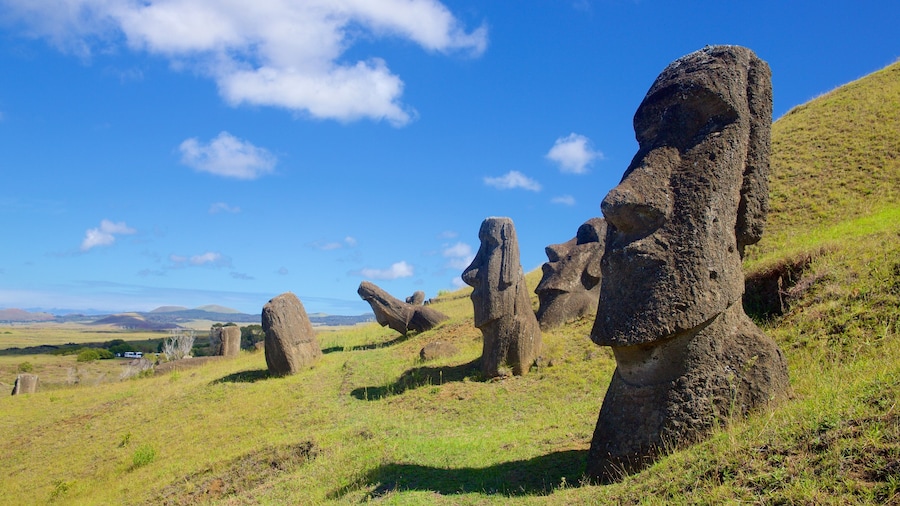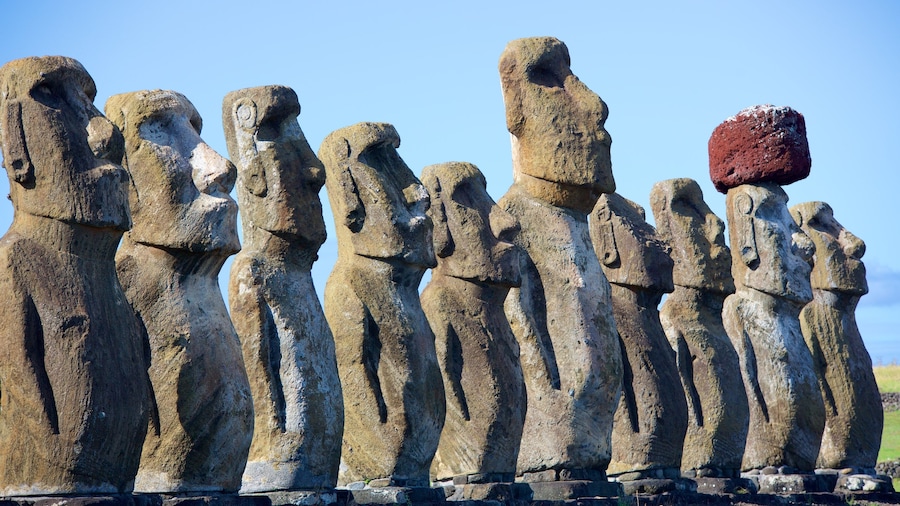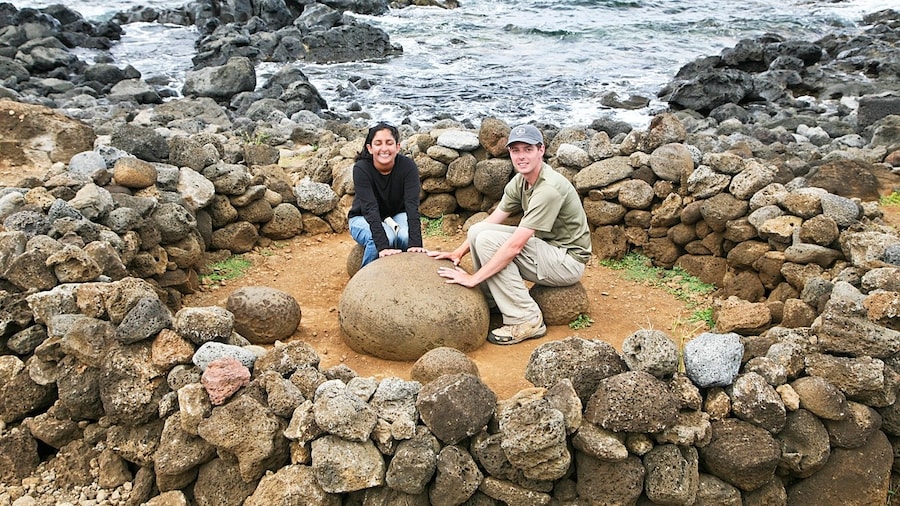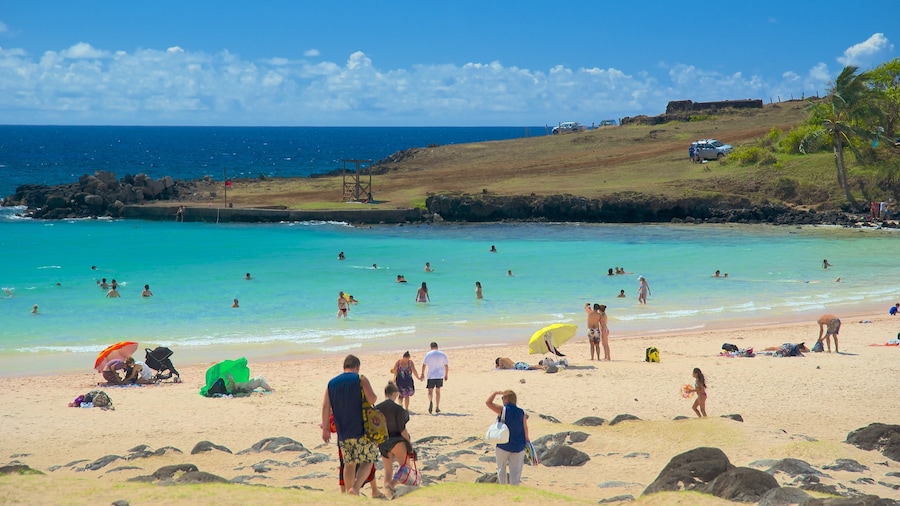Ahu Hanga Tetenga is one of the mysterious moai sculptures that decorate the coastline, cliffs and fields of Easter Island. The Rapa Nui, who were the Polynesian people that settled on the island, carved hundreds of these monolithic human figures between A.D. 1100 and 1500. Popular belief is that Ahu Hanga Tetenga and the other moai are commemorations of the deceased tribespeople. They stand with their backs to the ocean and are said to be repositories of sacred spirits.
Measuring almost 33 feet (10 meters) in height, Ahu Hanga Tetenga is among the biggest ever transported to a platform. Today it lies scattered in ruined parts and an unsolved mystery surrounds its history. There’s no evidence to suggest whether the moai fell after being erected, crashed to the ground during erection or was never raised at all.
The most notable fragment of the statue is the head, of which the ears, eye sockets and nose are clearly visible. A lack of detail to the eye sockets makes archaeologists believe that the moai was never raised. The eyes were usually finished when the statues were in an upright position. Take photos of the landmark with the perfect blue water of the Pacific and the island’s green fields, hills and rocky cliffs as backgrounds.
You’ll find other important monoliths in the same area of the island. About 2 miles (3 kilometers) to the west is Ahu Akahanga, the rumored burial ground of Hotu Matu’a, who was the first leader of the Rapa Nui. To the northeast is a collection of 15 moai called Ahu Tongariki. Close to here is Rano Raraku, a quarry with the biggest concentration of statues, including the 72-feet (22-meter) tall El Gigante.
Reach Ahu Hanga Tetenga by renting a car, quadbike or scooter in Hanga Roa. Guided tours also depart from the island’s main town. Cycling and hiking between the landmarks is possible, although a good level of fitness is recommended for the long distances and during the summer heat.
